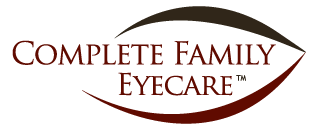Question and Answer Session on our new Eidon Retinal Imaging System!

Q.) What is the difference between the new Eidon imaging system and the previous imaging we have done in the past?
A.) Our current imaging system (which we have provided at no charge for many years) allowed for imaging only a small area of the eye’s interior structures. Pupil dilation with direct examination is then usually required to view structures outside of the small image. The new Eidon system will give a much bigger view, similar to that of a dilated pupil examination – without the dilation!
Q.) How is the Eidon different from other wide view imaging systems?
A. Older technology wide view imaging systems are also capable of larger areas of the retina, but the quality of the images are often mediocre at best resulting in continued need for dilation. Eidon provides a very wide field with much higher quality images.
Q.) What are the eye health benefits of the Eidon imaging?
A.) Eidon imaging will allow Dr. Steve and Dr. Sarah to photo document important tissues inside of your eyes including your retina (detachment or tear), macula (degeneration) and optic nerve (glaucoma). Images will then be stored for comparison to future scans and allow tracking of any changes in or progression of existing problems.
Q.) If I choose not to have the Eidon imaging, will standard imaging still be done?
A.) Yes, however the standard imaging system gives only a small view of the retina and pupil dilation may still be required to perform a thorough examination.
Q.) Will I ever still need pupil dilation even if I choose to have the Eidon imaging done?
A.) If Dr. Steve or Dr. Sarah notice something in the Eidon scan that needs further investigation or if the pupils are too small to get a good image, pupil dilation may still be needed.
Q.) Which patients are the best candidates for choosing the Eidon imaging?
A.) Anyone who does not want to get their pupils dilated! Particularly younger patients with naturally bigger pupils, non-diabetics, and no history of retinal disease.
Q. What patients would NOT be good candidates for the Eidon imaging alternative to pupil dilation?
A.) Eidon needs a minimum pupil size to get the proper imaging. Some patients (especially as we get “less young”) have very small pupils which may make it difficult to get a good image and may still require dilation. Diabetic and highly nearsighted patients as well as those patients with history of previous retinal, macular or other eye diseases will probably still need pupil dilation.
Q.) Will there be a fee for the new Eidon imaging?
A.) The fee for the Eidon is $39 (includes both eyes) and is not covered by insurance.
Q.) Why doesn’t insurance cover Eidon imaging?
A.) Insurance – the more you pay for it – the less it covers?! Most insurance companies cover (at most) a basic eye examination. Above and beyond, extra thorough, making your experience better and your life easier procedures such as Eidon are usually not covered by any insurances or vision plans.
